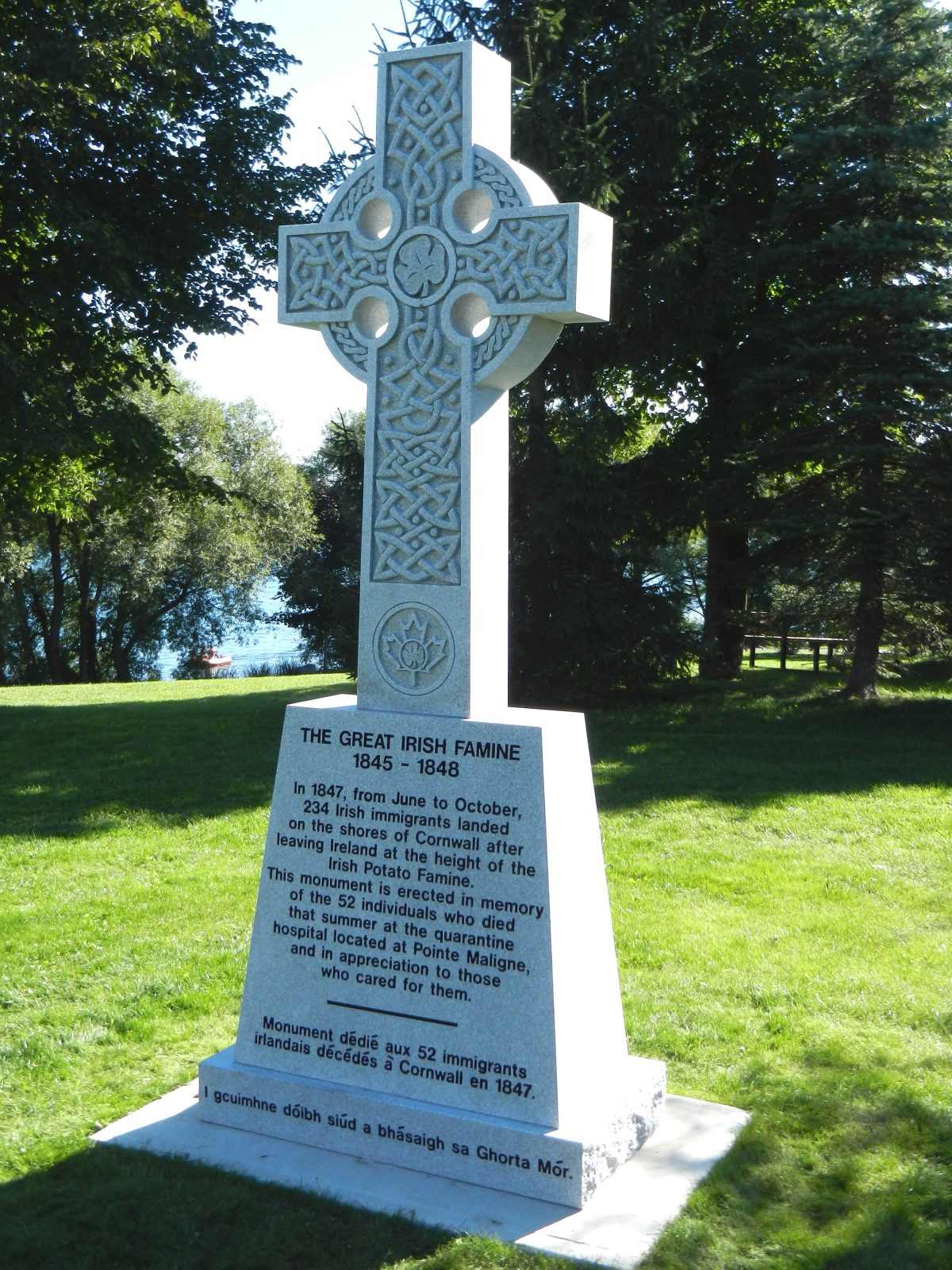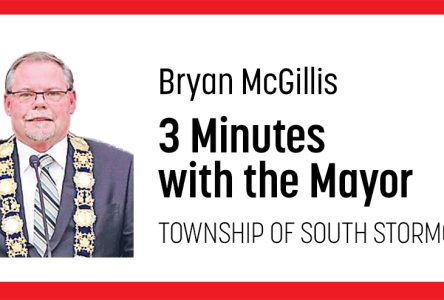By Adam Brazeau
CORWNALL, Ontario – Deeply rooted in Ireland, now the Celtic cross has roots in Cornwall’s Lamoureux Park.
A memorial honouring the 52 immigrant men, women, and children who perished in Cornwall’s 1847 quarantine shed, and those that cared for them will be dedicated at the Cornwall Community Museum, on Saturday, Oct. 18, at 2 p.m.
Dr. Ray Bassett, the Irish Ambassador to Canada, will speak at the ceremony.
“This project has been low key, but a determined group of people made it happen,” said Katie Burke, chair for the Cornwall Irish Memorial committee. “Everyone is invited to attend this event that will take place 167 years to the day after the quarantine sheds closed.”
The idea to erect a memorial started about two and a half years ago, when museum curator Ian Bowering was given some papers and among those documents was the list containing the names of those who were admitted to the hospital.
This list is considered a valuable historical document because it not only recorded the names, but also indicated the age, the religion, the disease, when they were admitted to the hospital, when they were discharged, if they died, and the number of days they were in hospital care.
Knowledge of the temporary hospital (or ‘fever shed’ as they were known) on Pointe Maligne (a point of land at the foot of Marlborough Street) was well established, but beyond that information was scarce.
“These details are important and they put a face to the greatest crisis in local history,” said Burke.
Cornwall, at the time, had roughly 1,500 inhabitants. The arrival in June 1847 of 234 Irish immigrants who were fleeing the Irish Potato Famine (1847-49) would have strained local resources at the best of times, but the fact that many were suffering from typhoid and/or dysentery made the situation much more serious.
The hospital was in place from roughly June 14 to October 18, 1847.
“It was a short period of time, but the public health practices put in place by doctors Bergin and MacDonald (the attending physicians) meant that no one from Cornwall became a victim of typhoid or dysentery because of the Irish immigrants,” said Burke.
Many of those who passed away are buried in the cemetery located to the east of St. Columban’s Church.
Each member of the Cornwall Irish Memorial committee has an Irish connection and a desire to see the city identified as a community that responded to an international crisis.
The committee consists of Dr. Bob Lynch, Josephine Donnelly, Trevor Wheeler, Jim Downey, and Burke.
“We went to the Waterfront Committee for approval and to identify a suitable location. We appealed to friends and family, mainly by word of mouth, to raise enough to erect the monument,” she said.
The fundraising campaign was launched on March 17, 2013 with the hopes of reaching its target in one year.
“The work of getting the Celtic cross erected and the main inscription on it has been accomplished,” said Burke. “Once all the bills are in, we will see where we stand financially and if possible, we would also like to inscribe the names of those who died as well as the two doctors – but that will come with time and more funding.”
In the years of the Irish Famine, Ireland essentially lost about half of its population to it or to emigration. Cornwall is part of that history.
“The Irish Famine provided Canada with an immigration crisis that was unparalleled. It also provided the country with some very resilient people whose descendants can still be found in our community, in every walk of life, and who have contributed greatly to the making of Cornwall and Canada,” said Burke.




